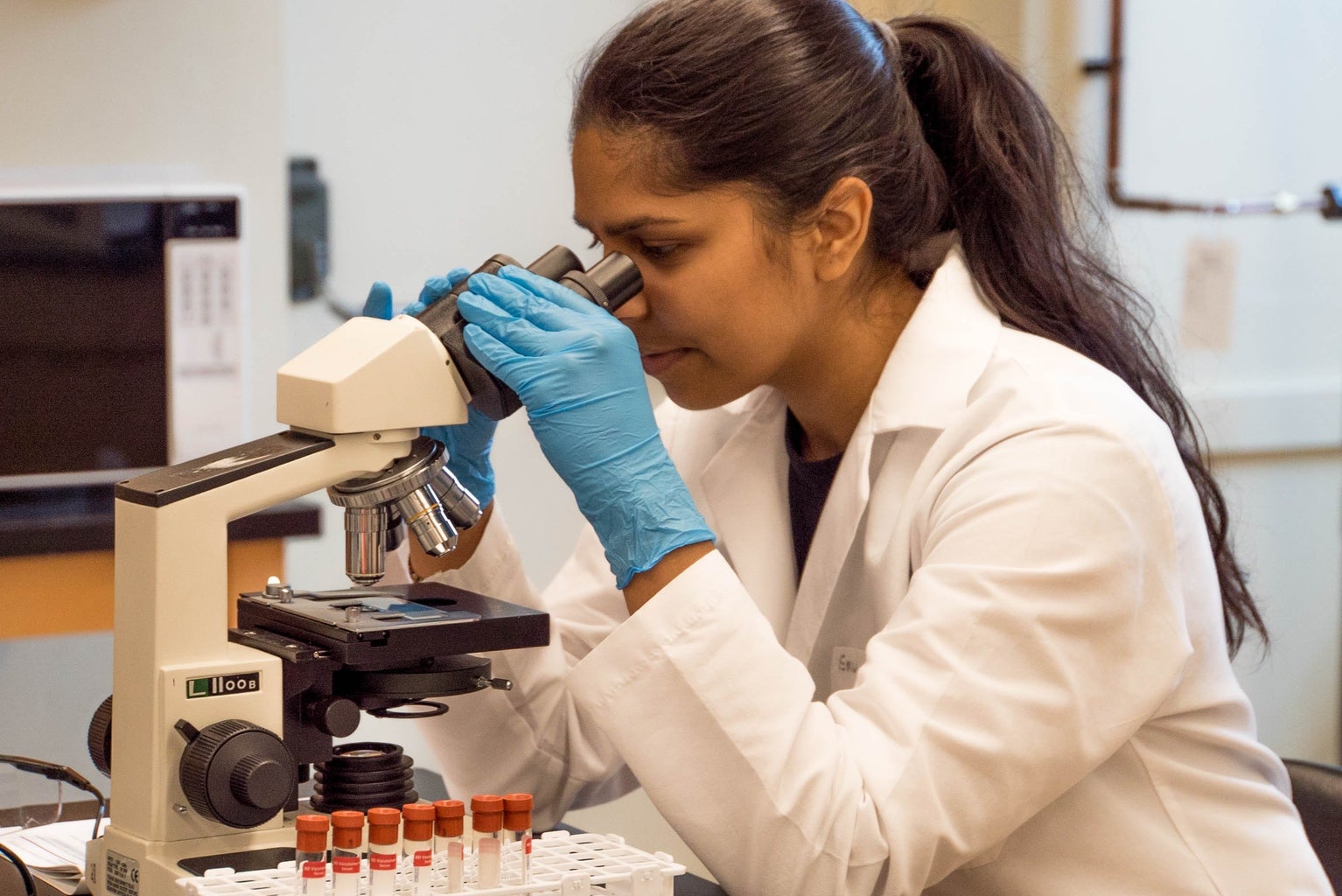Science has always been fascinating to me since primary school, and I knew biology was the field I wanted to go into once I reached college. My curiosity for the mechanisms behind biological systems started at a very young age and continues to this day. Although not the easiest, biology is a rewarding field with so many fascinating concepts to be learned. To me, cell and molecular biology is a fascinating field of study that plays a fundamental part of life, although microscopic. The COVID-19 pandemic is a direct reminder of the major impacts the molecular world has on our everyday world, and playing a role in this field is integral to making the world a better place.
Choosing to pursue a science, technology, engineering, or math (STEM) degree may not be the case for a lot of women. According to the American Association of University Women, women may be systematically discouraged from pursuing STEM all throughout their academic lives, which contributes to women making up around 28% of the STEM workforce. Why so few? This may have to do with underlying factors within academic and work settings. Although there are no significant differences in IQ between males and females, the notion that men are innately better than women in terms of mathematics and science remains a common belief around the world as STEM fields have been male-dominated historically. If these fields are viewed as masculine, girls may not consider an education in STEM.
Another issue is a lack of role models, who are vital as they allow and inspire women and young girls to visualize themselves in these roles. Representation is extremely important, and the Tech Diversity Magazine cites research suggesting female faculty members and instructors have a positive impact on the retention of female STEM majors, and the absense of females in these roles is correlated with fewer females in STEM fields. Although improving, underrepresentation of female scientists is still prevalent—especially women of color. Of the 28% of women in the current STEM workforce, women of color make up only 5% according to the National Science Board. Black women in particular make up one of the lowest percentages of women who graduate with STEM degrees, with even fewer at postgraduate positions. Being a woman of color myself, not only am I underrepresented as a woman in science, but underrepresented also as a woman of color. Too often I see fewer women like me in science, and I feel I have a responsibility to encourage other women of color to pursue science if they share the same passion. There are no limits—skin tone nor gender. It is important to know that any woman, regardless of race, can be highly successful and competative in science and math. Although this has slowly improved over time with more diversity being implemented into STEM and hidden figures being uncovered and represented, there is still plenty of room for much-needed improvement.

Not all looks grim. Recent data shows an increasing number of women choosing to pursue STEM majors in college. Women who obtain these degrees have increased by 50,000 in the past decade, and over 200,000 women obtained a STEM degree in 2016, which is an improvement compared to 140,000 in 2009. If you are a woman who is in a STEM field, celebrate your passions because the world needs more brilliant minds to make the world a better place for future generations. Science is crucial to successful societies, and as stated earlier, Covid-19 is an important reminder of the importance and priority science has on the world.
In order to close the gender gap and increase the number of women in STEM, we must undo the notion that men outsmart women in these fields, and that women can achieve just as much as men can. We must eliminate bias and discrimination based on sex and strongly reinforce laws such as Title IX to ensure women have equal opportunities to get a quality education, equal pay, and a career free of discrimination. We must continue to invest in the passions of young girls by increasing representation in the media, and provide them with the confidence and resources needed to be successful scientists, engineers, and mathematicians. I feel as though it is also my responsibility, as a woman, to reach out and support to other women. I always remind myself to focus on my passions and eliminate the background noise filled with doubt and contradicting statements that may pull me away from my goals. STEM fields can be challenging, but by staying true to what you love, whether it’s biology, engineering, chemistry, or physics, nobody can take away a passion so deeply rooted.


